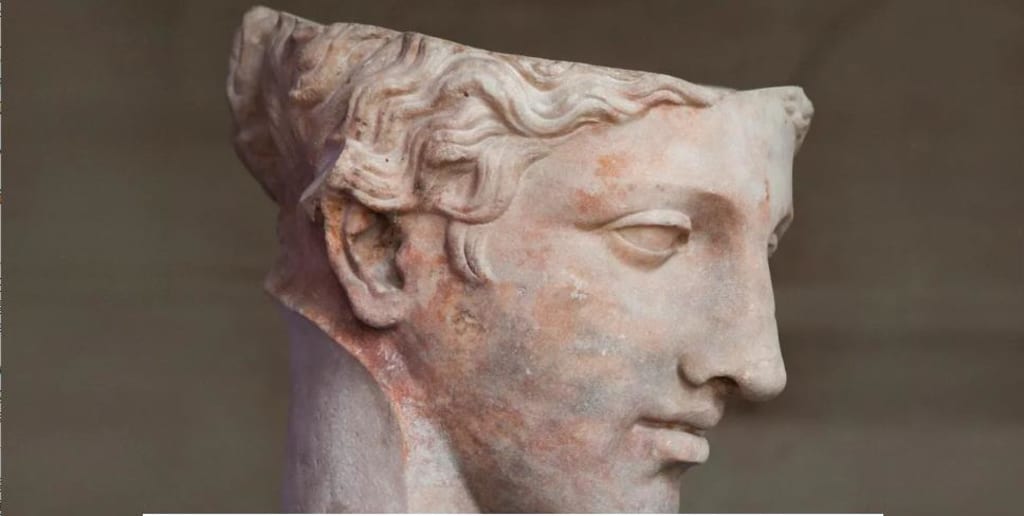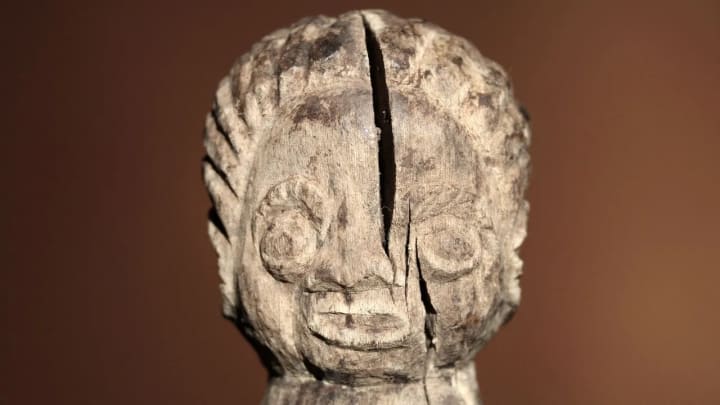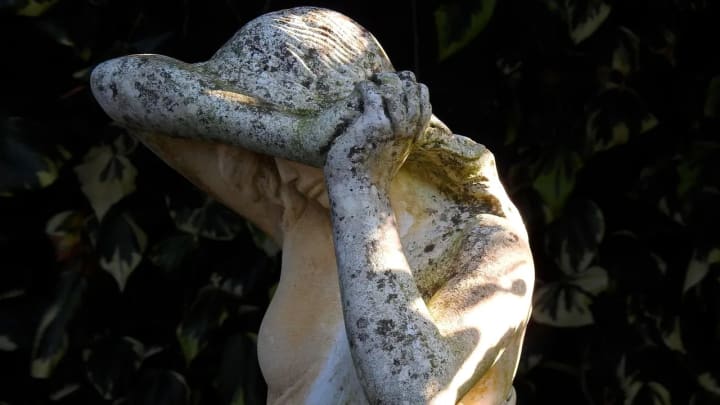Why don't we know more about migraines?
Migraines affect one in every five women and is the world’s second-largest contributor to years of disability. But research remains severely underfunded – and some specialists dismiss it as a 'real neurology’.

The first time I experienced a migraine was one evening after school. A dull headache turned into splitting pain, blurring my vision and converting my bedroom light into a source of pure agony. Then came the vomiting. It’s a cycle I’ve experienced countless times in recent years – one that forced me to quit my job and left me feeling helpless.
A migraine attack has long been passed off as ‘just a headache’. But while ‘normal’ headaches can usually be held at bay with a paracetamol or two, a migraine is aggressive, sometimes enough to be severely debilitating. It has no conclusive cause (hormones and abnormal brain activity are just two potential reasons) or sustainable treatment on offer.

Perhaps it’s little surprise, then, that the world’s leading survey of health conditions across 195 countries found that, in every year from 1990 to 2016, migraine attacks remained the second-largest global contributor to years lived with disability. They come with a huge economic cost, too, causing an estimated 25 million sick days to be taken in the UK alone each year. But compared to their health and economic burden, migraines remain one of the world’s most under-funded diseases.
You might also like these other stories in the Health Gap:
• ‘Everybody was telling me there was nothing wrong’
• Why alcohol affects women more than men
• The health risks of maturing early
The disorder is also much more prevalent in women. In general, one in five women suffer compared to one in 15 men.
Reasons remain unclear – though a University of Arizona study of male and female rats, published in April 2018, suggests that it may be because of the link between higher oestrogen levels and lower levels of the sodium proton exchanger NHE1. Without enough NHE1, pain signalling increases. "Based on our findings, we think that women are more susceptible to migraine because the larger magnitude sex hormone fluctuations lead to changes in NHE1 expression," researcher Emily Galloway explained.

But when it comes to research and funding, migraines have been less investigated than other ailments. Despite the enormous economic costs, they continue to receive the least public funding of any neurological illness in Europe. In the US, where migraines affect an estimated 15% of people, the condition received $22m in research funding (£17m) in 2017. Asthma, which affects half as many people, received 13 times that amount ($286m or £218m); diabetes, affecting two-thirds as many people, received 50 times as much ($1.1bn or £84m). (Of course, it’s worth noting that asthma and diabetes are potentially life-threatening conditions).
When the condition is studied, it often is affected by a trend seen in other healthcare research: most migraine research on animals has been done on males even though women suffer from migraines more.
Given the prevalence of migraines among women, this apparent neglect could be a result of how physicians tend to underrate pain in female patients. It may also reflect the historic – and similarly gendered – associations between migraines and mental illness.
Heady history
These throbbing headaches are one of the human race’s oldest recorded ailments. Ancient Egyptian scriptures from 1200 BC detail migraine-like headaches; Hippocrates wrote about the visual disturbances and vomiting commonly associated with the disorder.

The actual discovery of migraines, however, is routinely credited to the ancient Greek doctor Aretaeus of Cappadocia, who accurately described their one-sidedness and symptom-free periods in the second century. (In fact, the word ‘migraine’ is derived from the Greek term ‘hemicrania’, meaning half skull).
Treatments in the Middle Ages included trepanation and a clove of garlic being inserted into an incision in the temple
Historically, the believed cause and treatment of migraines had deep superstitious links. A number of questionable treatments arose in the Middle Ages from blood-letting and witchcraft to a clove of garlic being inserted into an incision in the temple. Some medical experts recommended trepanation – the drilling of holes into the skull – as a migraine remedy. The gruesome procedure was commonly used to release evil spirits from people who were more likely to have been suffering from a mental illness than demonic possession, and is one of the first supposed links between migraines and the mind.

The greater number of females with migraines initially was noticed by doctors in the 19th Century. They believed the mind was to blame, describing the condition as a disorder of “mothers in the lower classes” whose minds were weak due to daily work, little sleep, frequent lactation and malnourishment. Women experiencing acute headaches were often ridiculed and seen as hysterical, starting the stigma of neurosis that still exists today.
“For a long time, migraine was considered a disease of modern luxury, the kind of thing that struck down intelligent upper class men and women,” says Joanna Kempner, associate professor of sociology at Rutgers University. “People with this upbringing were thought to have delicate nervous systems which enabled at least the men to engage in artistic and scientific pursuits.
“Of course, women were believed to have a much diminished capacity for intellectual work and, as a result, could more easily overload their ‘delicate nervous systems’.”

Indeed, the father of modern headache medicine, American neurologist Harold G Wolff, defined a distinct difference between male and female migraine patients. To him, men were ambitious and successful (only getting a migraine when tired). But women had a migraine attack because they were incapable of accepting the female role, particularly when it came to sex. Wolff said his female patients accepted sex as “a reasonable marital duty, at best. In several instances, it was deemed frankly unpleasant and was resented.”
Some thesauruses even listed ‘migraine’ as a synonym for ‘spouse’
Kempner adds: “by the end of the 20th Century, migraine became nearly synonymous with the neurotic housewife – in fact, some thesauruses even list ‘migraine’ as a synonym for ‘spouse’.”
Mind matters
It can’t be denied that there appears to be a link between the headache disorder and mental health. Several studies have concluded that migraines are commonly associated with a range of psychiatric disorders. A 2016 review found high rates of correlation between migraines and bipolar; meanwhile, people with migraines are 2.5 times more likely to develop generalised anxiety disorder (GAD), and people with depression are three times more likely to experience migraine attacks. Another study found that around one in every six migraine sufferers have seriously considered suicide at some point in their lives. (One in 10 people in the general population are said to have had suicidal thoughts.)
“But whether it is causal is a big question,” says Messoud Ashina, neurology professor and director of the Danish Headache Centre’s Human Migraine Research Unit. “When you have a very prevalent disorder like migraine, the likelihood that it can overlap with other diseases is quite high.”

Of course, suffering from migraines may also lead to poor mental health – rather than a ‘delicate constitution’ leading to migraines, as Victorian physicians would have had it.
“It’s not surprising that anxiety levels are high when one is never sure when a migraine will occur and if the pain will interfere with work and family responsibilities,” points out Esme Fuller Thomson, director of the Institute for Life Course & Ageing at the University of Toronto who has researched migraine-suicide links.
Depression, meanwhile, also may be exacerbated by the feelings of helplessness that people with migraines often experience.
Despite the effect of migraine attacks on such a vast sum of the population, the condition is surprisingly little understood or researched. “Many people in neurology and society consider migraine as a benign disease – it is not a cancer, it is not Parkinson’s,” Ashina says. “But if you look at its public and personal impact, migraine is a huge issue.”

Amaal Starling, assistant professor of neurology at Mayo Clinic in Scottsdale, Arizona, says some specialists don’t see it as a ‘real neurology’. Headache specialists therefore have found it difficult to legitimise their practice and convince others that funding is a necessity, not a luxury.
Headache is the commonest symptom found in neurologic outpatients and the least taught to neurology residents. It’s like training electricians, but not telling them about light bulbs
And some of that difficulty in getting a predominantly ‘female’ condition taken seriously may be gender bias: in general, women have a harder time getting their pain symptoms taken seriously or getting a correct medical diagnosis than men.
Common condition
The sheer number of patients with migraines means that specialists should be well-versed in the condition, experts say. As one source that Kempner spoke with for her book Not Tonight: Migraine and the Politics of Gender and Health said: “Headache is the commonest symptom found in neurologic outpatients and the least taught to neurology residents. It’s like training electricians, but not telling them about light bulbs.”
Fortunately, a new treatment may be in the works: an injection called Erenumab, administered once a month, which works by blocking a receptor in the brain that activates a migraine attack. (A similar drug that also targets the CGRP receptor was granted approval by the US Food and Drug Administration in May 2018).

A new treatment designed specifically for migraines may give sufferers some relief






Comments
There are no comments for this story
Be the first to respond and start the conversation.